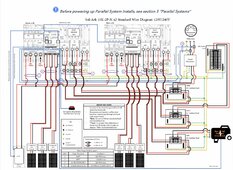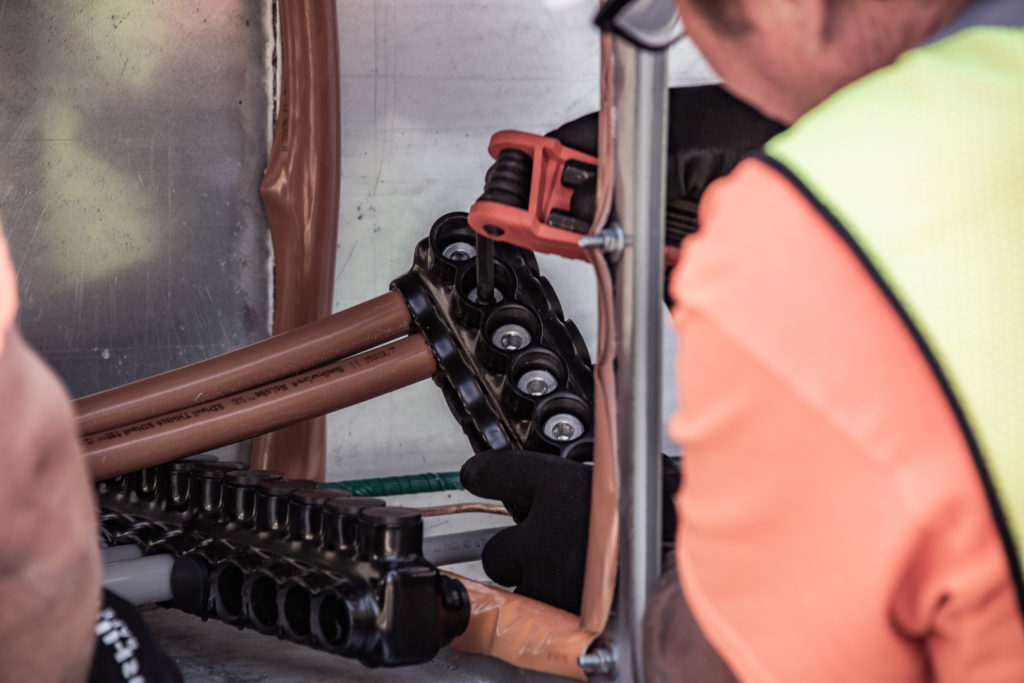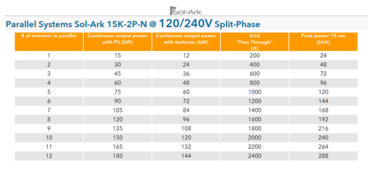WattAboutThat
New Member
- Joined
- Dec 15, 2021
- Messages
- 123
Will Prowse’s Blue Print for Parallel EG4 6000XP
I watched Will Prowse’s video on paralleling TWO EG4 6000XP inverters. It was great info as usual.
I need assistance on the folliwing:
I am trying to parallel Two EG4 18kPV Inverters.
Each can output 200Amps 240V.
I need to combine both outputs into
one which would result in 400Amps,
via sone kind of AC Combiner box, or bus, or multi blade switch, to then go to a distribution panel.
I have no idea how to do this, or what to search for. Everything that uses breakers appears to be thousands of dollars.
So I want to be safe but not go broke in tge process.
Please advise.
I found a 3 blade switch on amazon for $170,
but i wasn’t sure that would be safe, with exposed blades.
Looking for solutions.
Thanks.
I watched Will Prowse’s video on paralleling TWO EG4 6000XP inverters. It was great info as usual.
I need assistance on the folliwing:
I am trying to parallel Two EG4 18kPV Inverters.
Each can output 200Amps 240V.
I need to combine both outputs into
one which would result in 400Amps,
via sone kind of AC Combiner box, or bus, or multi blade switch, to then go to a distribution panel.
I have no idea how to do this, or what to search for. Everything that uses breakers appears to be thousands of dollars.
So I want to be safe but not go broke in tge process.
Please advise.
I found a 3 blade switch on amazon for $170,
but i wasn’t sure that would be safe, with exposed blades.
Looking for solutions.
Thanks.







